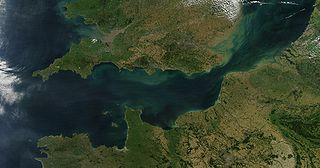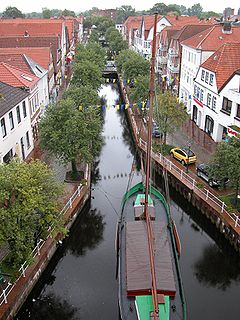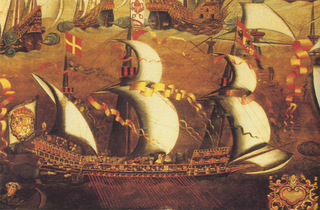This article needs additional citations for verification .(November 2018) (Learn how and when to remove this template message) |
| History | |
|---|---|
| Name: | Santiago |
| Launched: | 1551 |
| Struck: | 1588 |
| Fate: | wrecked |
Santiago was a Spanish Armada supply ship that wrecked south of Bergen, Norway in 1588 (Ødegaard 2001: 19). It was built in 1551 probably in Flanders and, at 37 years old, was one of the oldest ships in the Armada (Ødegaard 2001: 13, Martin & Parker 1999: 26). Santiago was an urca (hulk), a type of ship used to carry goods between northern Europe and southern Europe. Spanish authorities seized Santiago in 1587 while it lay in port in Sanlúcar de Barrameda and pressed it into service for the Armada’s planned invasion of England (Ødegaard 2001: 13).

The Spanish Armada was a Habsburg Spanish fleet of 130 ships that sailed from A Coruña in late May 1588, under the command of the Duke of Medina Sidonia, with the purpose of escorting an army from Flanders to invade England. The strategic aim was to overthrow Queen Elizabeth I and her establishment of Protestantism in England, with the expectation that this would put a stop to English interference in the Spanish Netherlands and to the harm caused to Spanish interests by English and Dutch privateering.

Sanlúcar de Barrameda, or simply Sanlúcar, is a city in the northwest of Cádiz province, part of the autonomous community of Andalucía in southern Spain. Sanlúcar is located on the left bank at the mouth of the Guadalquivir River opposite the Doñana National Park, 52 km from the provincial capital Cádiz and 119 km from Sevilla capital of the autonomous region Andalucía. Its population is 65,805 inhabitants.
Santiago carried a variety of supplies and armament. These included 24 artillery mules, gunpowder, musket balls, horseshoes, horseshoe nails, hinges, wagon rods, barrel bands, iron plates, lead bar, and hardtack (Ødegaard 2001: 30,34,74). Santiago was equipped with 19 canons (Ødegaard 2001: 14, Martin & Parker 1999: 264).

Hardtack is a simple type of biscuit or cracker, made from flour, water, and sometimes salt. Hardtack is inexpensive and long-lasting. It is used for sustenance in the absence of perishable foods, commonly during long sea voyages, land migrations, and military campaigns.
Santiago had 116 people on board when it sailed with the rest of the Armada from La Coruña out into the English Channel to engage the English fleet in July 1588 (Ødegaard 2001: 15, Martin & Parker 1999: xix). The crew consisted of 33 sailors and officers (civilians), 16 stable boys, 3 artillerists, 32 Spanish soldiers, and 32 women who were the wives of the 32 Spanish soldiers. This unusual arrangement (carrying soldiers’ wives) earned Santiago the moniker "ship of the women" (Martin & Parker 1999: 26,264).

The English Channel, also called simply the Channel, is the body of water that separates Southern England from northern France and links the southern part of the North Sea to the Atlantic Ocean. It is the busiest shipping area in the world.
Four people had responsibility for the ship and people on board (Ødegaard 2001: 26,29). The captain was Nicolán de Juan of Aragon. The skipper was Simon Unique. Alonso de Olmos had command of the Spanish soldiers. Diego de la Nava had command of the men who operated the artillery and cared for the mules.
After losing a series of battles with the English fleet, the Armada escaped by sailing north between England and Norway (Martin & Parker 1999: 211). They planned to sail around the north end of the British Isles, out into the Atlantic Ocean, then south to Spain. Many ships began to fall behind (Martin & Parker 1999: 211, Ødegaard 2001: 29).
In very bad weather with a strong headwind, running short of supplies, and leaking, Santiago finally turned east and ran with the wind toward Norway (Ødegaard 2001: 29). They made landfall on 18 September 1588 near Skudeneshavn (Ødegaard 2001: 34) and picked up a local man who agreed to guide them north to Bergen. As they sailed up the coast, they encountered another strong storm. Leaking badly, they turned into Hardanger Fjord and wrecked near Mosterhamn (Ødegaard 2001: 34).

Everyone survived the wreck (Ødegaard 2001: 34). After a few months stay at several locations in the Bergen area, most of the crew sailed on a German ship toward Hamburg but wrecked again near Halmstad, Sweden (Ødegaard 2001: 19). They then traveled mostly overland to Buxtehude, a town near Hamburg, where they asked to be released to find their own way home (Ødegaard 2001: 39).

Buxtehude, officially the Hanseatic City of Buxtehude, is a town on the Este River in Northern Germany, belonging to the district of Stade in Lower Saxony. It is part of the Hamburg Metropolitan Region and attached to the city's S-Bahn rapid transit network. Buxtehude is a medium-sized town and the second largest municipality in the Stade district (Landkreis). It lies on the southern border of the Altes Land in close proximity to the city-state of Hamburg. To the west lie the towns of Horneburg and Stade and to the south there are a number of incorporated villages featuring mostly upscale housing, e.g. Ottensen and Apensen.








